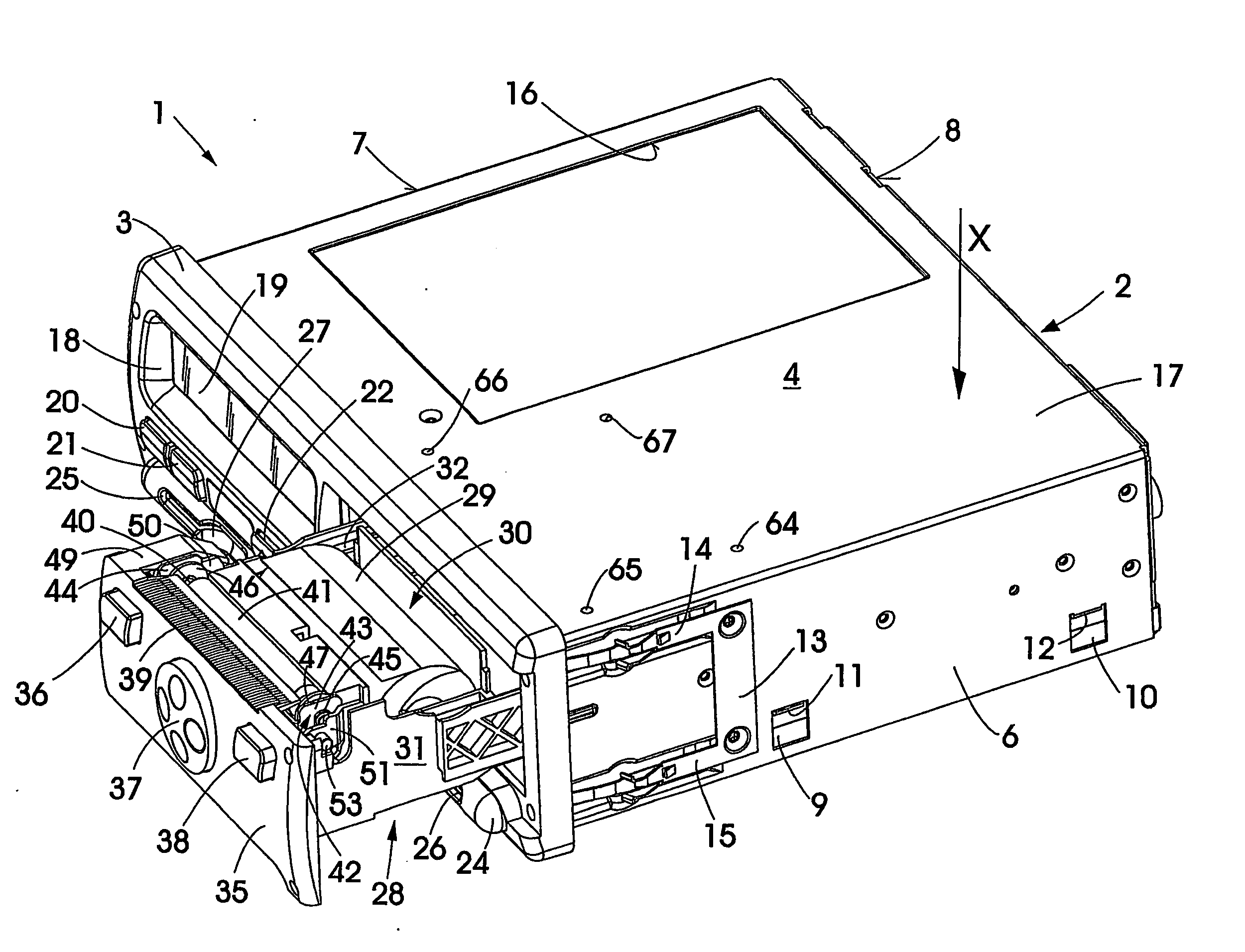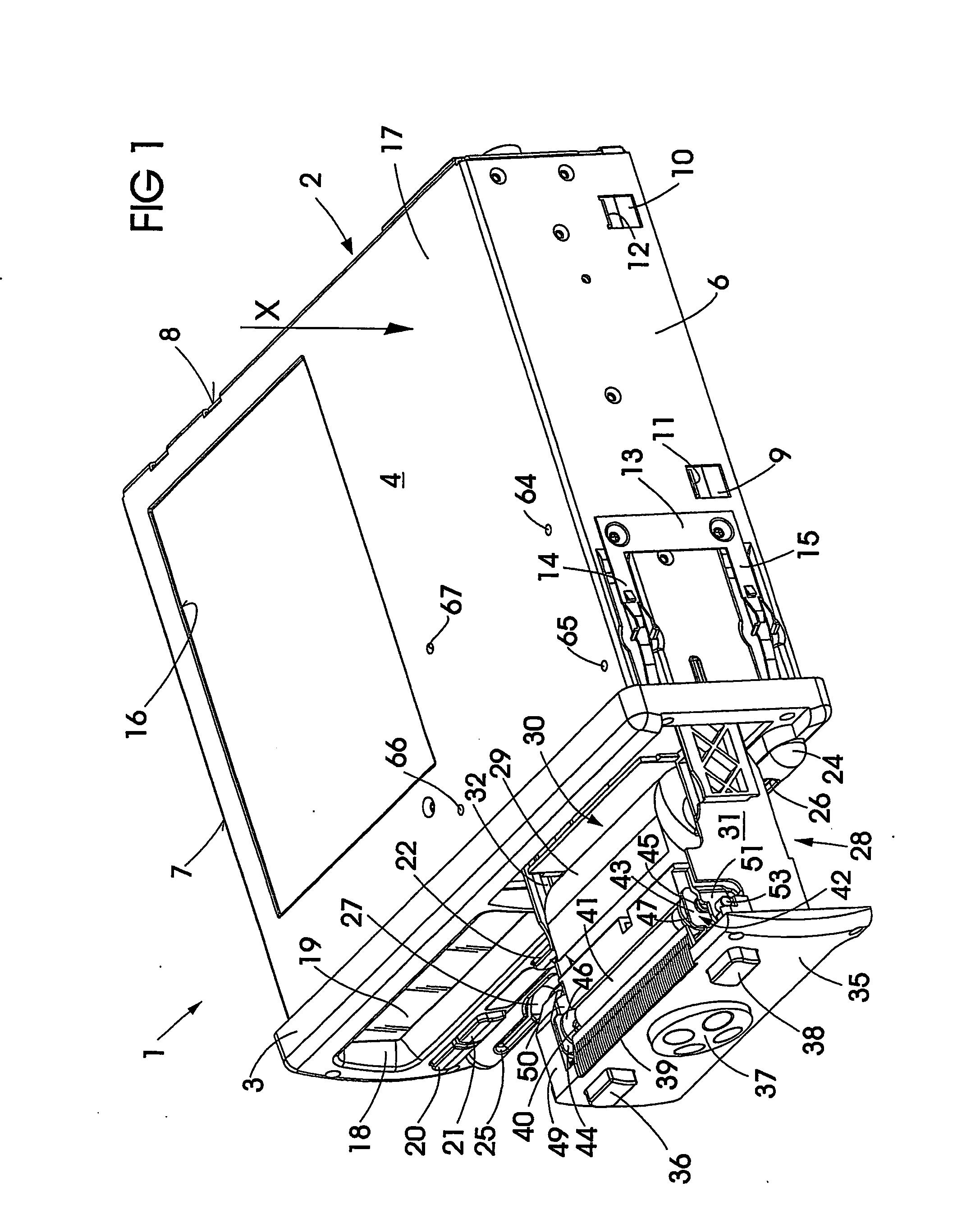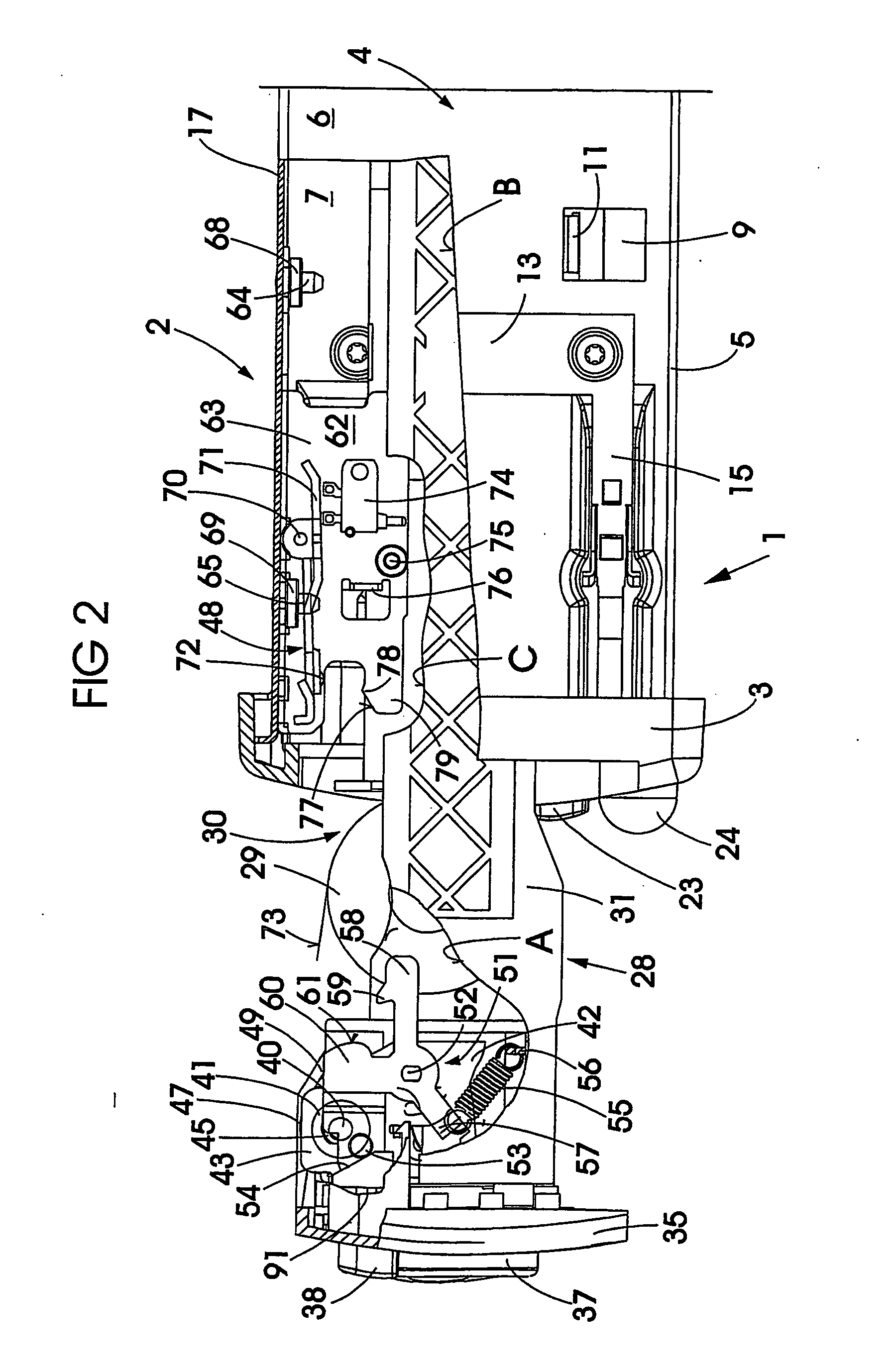Tachograph with cubic housing and printing device
a printing device and tachograph technology, applied in the field of tachographs with cubic housings and printing devices, can solve the problems of making the sealing of the front panel with respect to the front wall of the tachograph considerably more difficult in the locked state of the carrier, and the esthetically unfavorable gripping of the front panel of the carrier, so as to achieve the effect of convenient fitting
- Summary
- Abstract
- Description
- Claims
- Application Information
AI Technical Summary
Benefits of technology
Problems solved by technology
Method used
Image
Examples
Embodiment Construction
[0021] The tachograph 1 which is illustrated by FIG. 1 has a built-in housing part 2 and a front panel 3 fastened to the latter. The built-in housing part 2 comprises a cover part 4 and a bottom part 5, side walls 6 and 7 and also a rear wall 8 being integrally formed on the cover part 4. Limbs overlapping the side walls 6, 7 and the rear wall 8 are integrally formed on the bottom part 5 and on them latches, two 9 and 10 of which can be seen in FIG. 1, are formed. When the cover part 4 and base part 5 are joined together, said latches can be brought into engagement in a bayonet-like manner with tabs 11 and 12 which are formed on the side walls 6, 7. U-shaped components 13, the limbs of which are designed as resilient claws 14 and 15, are fastened on both side walls 6, 7 for the purpose of fastening the tachograph 1 in a built-in compartment or in a suitable opening, for example in a dashboard. A depression provided in the cover panel 17 for a nameplate is referred to by 16. A window...
PUM
 Login to View More
Login to View More Abstract
Description
Claims
Application Information
 Login to View More
Login to View More - R&D
- Intellectual Property
- Life Sciences
- Materials
- Tech Scout
- Unparalleled Data Quality
- Higher Quality Content
- 60% Fewer Hallucinations
Browse by: Latest US Patents, China's latest patents, Technical Efficacy Thesaurus, Application Domain, Technology Topic, Popular Technical Reports.
© 2025 PatSnap. All rights reserved.Legal|Privacy policy|Modern Slavery Act Transparency Statement|Sitemap|About US| Contact US: help@patsnap.com



